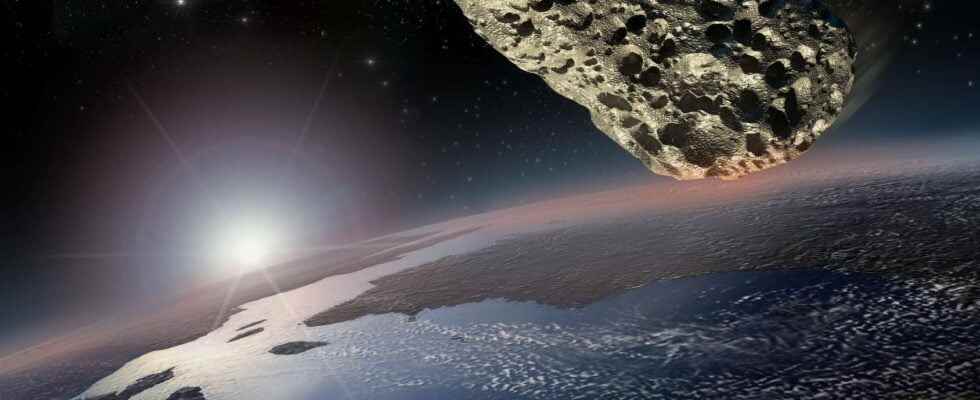A huge meteorite would have impacted the Earth more than 2 billion years ago. This cataclysmic event would have been followed by a long phase of rebalancing of the crust, generating earthquakes for several thousand years.
You will also be interested
[EN VIDÉO] 5 questions about meteorites They would have caused the disappearance of the dinosaurs and their craters adorn the surface of the Earth. Every day, the planet is bombarded by hundreds of meteorites.
Approximately every 100 million years, our planet is impacted by a asteroid large, more or less one kilometer in diameter. These rare but cataclysmic events are known to have severely impacted ecosystems, even, for some of them, to have caused mass extinctions. The best known being the one who participated in the extinction of the dinosaurs 65 million years ago.
But beyond the impact itself and these direct consequences (shock wave, heat wave, dust in the atmosphere, etc.), researchers have shown that such events could also cause earthquake over very long periods of time, several thousand years.
A gigantic crater 2 billion years old
A team from the University of Cape Town in South Africa worked on the structure of a giant impact, that of Vredefort, near Johannesburg. Little known, this impact crater is nevertheless the largest in the world. But its great age means that it is only partially visible. The impact would indeed have taken place at Precambrian, 2.02 billion years ago. Erosion therefore had time to do its work, gradually erasing the relief of the crater. Nearly 10 kilometers of rock would have been abraded in this way. The structure visible today in South Africa would represent only the deepest mark of the impact.
Although the initial structure of the crater is no longer visible, for scientists this significant erosion presents a formidable advantage, in particular allowing them to have access to geological structures normally buried. The researchers were thus able to study the dykes created during the impact. These are large “veins” filled with magma generated by the overheating of the rocks during the impact. Oriented more or less vertically, these dykes cross the granites that make up the continental crust in this region and go deep into the subsoil.
A crust that bounces on impact
The study of these dykes notably raised a question: how to explain their extension at great depth? One of the solutions mentioned is the opening of fractures in the Earth’s crust. For the researchers, the titanic impact would have brutally vaporized several kilometers of sediment. In response to this sudden loss of mass, the crust would have reacted by “bouncing”. This is the well-known isostatic rebalancing process. in former glacial regions. This isostatic response would have been accompanied by numerous tremors of Earth. But for how long?
The team of scientists realized that the dykes did not all have the same chemical composition. This observation implies that there were several magmatic episodes at the origin of these structures, and that the time between these episodes must have been relatively long to allow chemical differentiation. The idea of the researchers is that several episodes of earthquakes followed one another in time, opening in turn new fractures through which the magma resulting from the overheating of the impact would have gradually escaped. The region would thus have been shaken for at least tens of thousands of years after the impact, in connection with the rebalancing of the earth’s crust.
These results show how much these cataclysmic events affect the earth’s surface over time.
Interested in what you just read?
